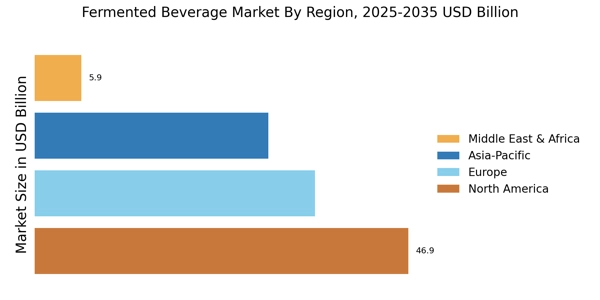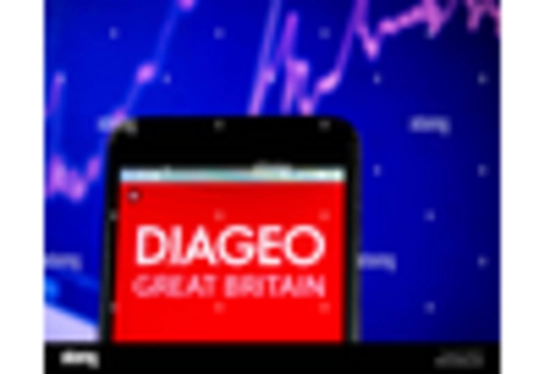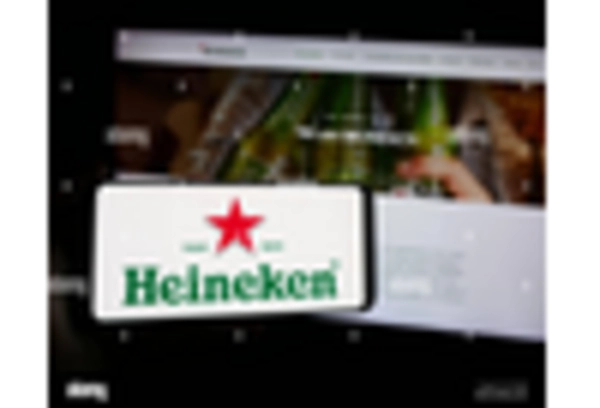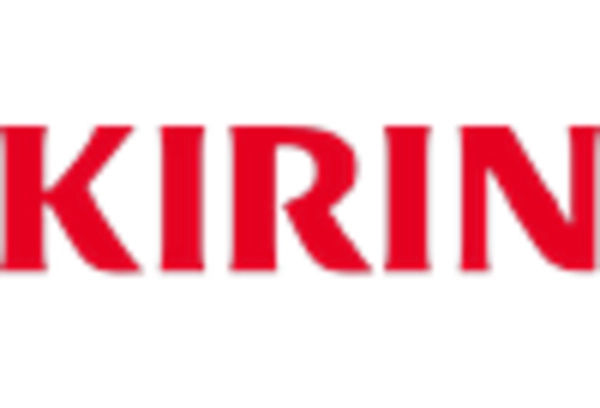The Fermented Beverage Market is currently characterized by a dynamic competitive landscape, driven by evolving consumer preferences and a growing inclination towards health-conscious products. Major players such as Anheuser-Busch InBev (Belgium), Heineken N.V. (Netherlands), and Diageo plc (United Kingdom) are strategically positioning themselves through innovation and regional expansion. Anheuser-Busch InBev (Belgium) has been focusing on diversifying its product portfolio to include low-alcohol and non-alcoholic options, reflecting a shift in consumer demand towards healthier alternatives. Meanwhile, Heineken N.V. (Netherlands) has been actively pursuing sustainability initiatives, aiming to reduce its carbon footprint and enhance its production processes. These strategies collectively contribute to a competitive environment that is increasingly influenced by consumer health trends and sustainability concerns.
In terms of business tactics, companies are localizing manufacturing and optimizing supply chains to enhance efficiency and responsiveness to market demands. The Fermented Beverage Market appears moderately fragmented, with a mix of large multinational corporations and smaller niche players. The collective influence of key players is significant, as they leverage their scale to drive innovation and capture market share, while also responding to local consumer preferences.
In August 2025, Diageo plc (United Kingdom) announced a partnership with a leading technology firm to develop an AI-driven platform aimed at optimizing its production processes. This strategic move is likely to enhance operational efficiency and reduce costs, positioning Diageo as a frontrunner in the integration of technology within the beverage sector. The emphasis on AI reflects a broader trend towards digital transformation in the industry, which could redefine competitive dynamics.
In September 2025, Heineken N.V. (Netherlands) launched a new line of organic fermented beverages, targeting the growing segment of health-conscious consumers. This initiative not only aligns with current consumer trends but also reinforces Heineken's commitment to sustainability. By investing in organic ingredients and environmentally friendly production methods, Heineken is likely to strengthen its brand loyalty among eco-conscious consumers, thereby enhancing its market position.
In October 2025, Anheuser-Busch InBev (Belgium) unveiled a new sustainability initiative aimed at reducing water usage in its brewing processes by 30% over the next five years. This ambitious goal underscores the company's commitment to environmental stewardship and may serve to differentiate its products in a crowded marketplace. As consumers increasingly prioritize sustainability, such initiatives could enhance brand perception and drive sales.
As of October 2025, the Fermented Beverage Market is witnessing trends that emphasize digitalization, sustainability, and technological integration. Strategic alliances are becoming more prevalent, as companies seek to leverage complementary strengths to enhance their competitive edge. The shift from price-based competition towards innovation and supply chain reliability is evident, suggesting that future differentiation will hinge on the ability to adapt to consumer demands and technological advancements.


















Leave a Comment